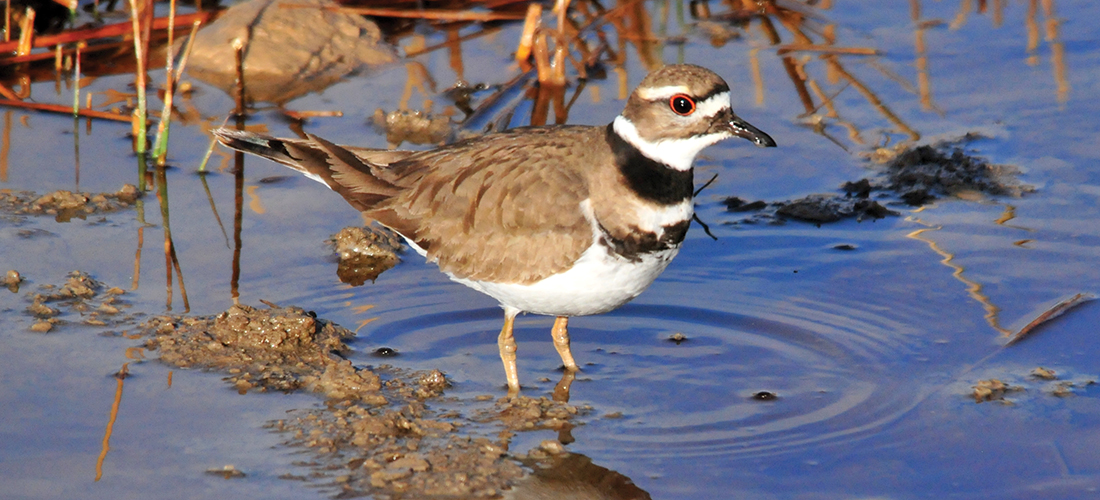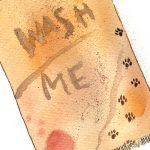
Grasspipers
‘Tis the season for “Buffies,” “Uppies” and killdeer
By Susan Campbell
As the long days of summer wane here in the Piedmont and Sandhills of North Carolina, we have scores of birds preparing for that long southbound journey we refer to as fall migration. Thousands of birds pass by, both day and night, headed for wintering grounds that are deep in the Southern Hemisphere. Some seem very unlikely candidates: medium-bodied shorebirds, dropping down in flocks to replenish their reserves. They may stay a few hours or a few days, depending on the weather and the abundance of food available to them. At first glance, you might think these long-legged birds are lost — far from the coast where sandpipers are commonplace. But once you take a good look, you will realize these are birds of grassland habitat, not sand flats.
Referred to broadly as “grasspipers” by birders, these species forage on a wide variety of invertebrates found in grassy expanses. They breed in open northern terrain, all the way up into the Arctic in some cases. And they are moving through in order to make their way to grassland habitat in southern South America. Although some may be seen along our coastline, they are more likely to be found in flocks or loose groups at airports, sod farms, athletic fields and perhaps even tilled croplands.
Come late August and early September, armed with binoculars, and, better yet, a powerful spotting telescope, you can find these cryptically colored birds without having to travel too far from home. They are indeed easy to miss unless you know where to look at the right time. Flocks often include a mix of species, so be ready to scrutinize each and every bird, lest you overlook one of the rarer individuals. When it comes to shorebirds as a group, many of the dozens of species are tricky to identify, so I suggest you arrange to join a more accomplished birder for starters.
The most common and numerous species without a doubt is the killdeer, identified by dark upper parts contrasted with white underparts, but it’s the double neck ring that gives it away. A spunky bird whose name comes from its call, the killdeer nests (if you can call a rudimentary scrape in the gravel a nest) on disturbed ground such as unpaved roadways and parking lots throughout North Carolina. Flocks of hundreds are not uncommon. But frequently other species are mixed in as well. In the Sandhills, the sod farm in Candor hosts large numbers of killdeer around Labor Day. Check them all and you will likely be rewarded with something different mixed in!
The plover family, to which the killdeer belongs, consists of squat, short-necked and billed birds of several species. The semipalmated plover is a close cousin. This slightly smaller species sports only a single neck ring and, curiously, individuals have slightly webbed (or palmate) feet. They can actually swim short distances when in wetter habitat and are thus more versatile foragers.
However, the most curious are the obligate grassland shorebirds that include the well-camouflaged buff-breasted sandpiper and the upland sandpiper. Both nest in the drier prairies of Canada and spend the winter months mainly in the pampas of Argentina. “Buffies” are a buff-brown all over and have delicate-looking heads and short, thin bills and a distinctive ring around the eye. “Uppies” are brownish and have small heads as well, but they have both longer bills and longer legs, along with larger eyes. These two species are thought to be declining — most likely due to habitat loss on both continents.
If you miss the chance to get out in search of inland shorebirds this fall, do not fret! They will move through again come spring, although in smaller numbers. Winter will take its toll but those who do make it back our way will be in vibrant plumage as they wing their way northward to create yet a new generation of grasspipers north of the border. OH
Susan would love to receive your wildlife sightings and photographs at susan@ncaves.com.





